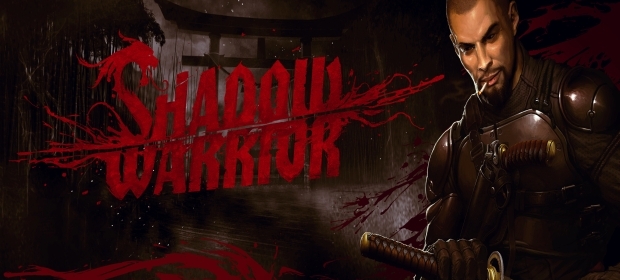The last time I booted up a game called Shadow Warrior was in 1998 on a Macintosh (yes, before it was shortened to the much hipper “Mac”) and, while it never surpassed its studio stable-mate, Duke Nukem, it was still a whole lot of ultra-violent fun. Now, 15 years later, Flying Wild Hog’s take on Shadow Warrior brings back a lot of fond memories by capturing the subtle elements that made the original such a blast and presenting them in a beautiful, updated package
It’s not quite a remake, but nor is it a sequel; it’s more of a re-imagining. You again play the role of Lo Wang, master swordsman, comic book collector and henchman of Master Zilla. The opening act finds you en-route to buy a legendary sword, the “Nobitsura Kage”, a mystical katana with untold powers. The deal goes smoothly, you return to your master and live out your days in peace and wealth. Just kidding. The transaction, of course, goes monumentally awry and you find yourself facing a host of Yakuza rejects and an impressive cast of demons and deities. After learning that the Nobitsura Kage actually refers to three swords, you form a reluctant partnership with a banished spirit called Hoji, who has a surprising knowledge of pop culture for a someone who has been locked in the Shadow Realm for several millennia.
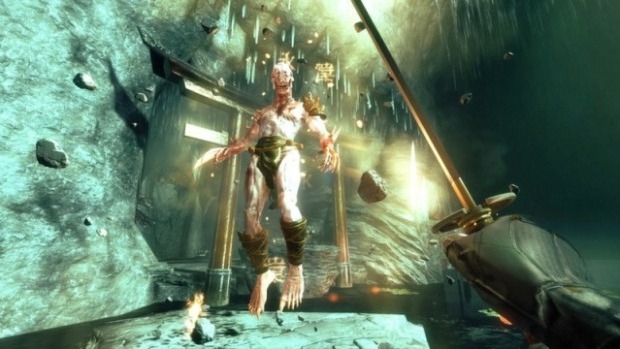
The plot becomes a little convoluted as you learn more and more about Hoji and the fated sword, and it’s a little overly dramatic for the genre. The internal politics of the Shadow Realm come to the forefront in the latter half and it’s hard to follow exactly what’s going on. The tone of the gameplay seems skewed toward a simpler narrative and, while it doesn’t detract too much from the experience, the confusion caused does taint proceedings slightly.
Shadow Warrior is packed with Easter eggs and nods to its predecessor, and there are lots of references to other 3D Realms and Devolver Digital games, too. The script is sharp and funny, and the banter between Lo Wang and Hoji is pretty hilarious at times. That said, it’s a little inconsistent as the final third of the game is a bit less about witty one liners and lot more about the fate of the world hanging in the balance, which makes sense from a narrative point of view, but perhaps isn’t the way Shadow Warrior should have gone.
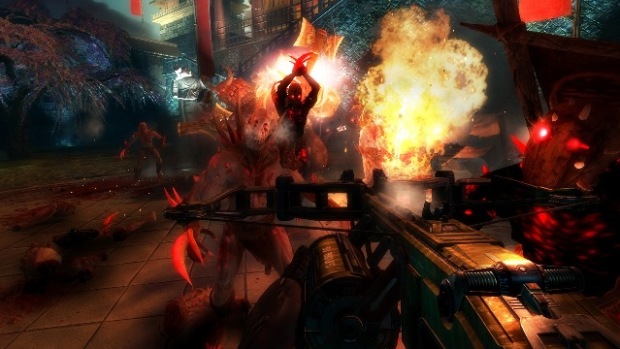
Plot grievances aside, the game plays beautifully. The 10+ hour campaign takes you through a variety of locations, from stereotypical Japanese villages, to shipyards, laboratories, mountain fortresses and, of course, the Shadow Realm itself. It’s certainly a refreshingly meaty campaign, which it has to be, as Flying WIld Hog chose not to include a multiplayer component. The frequent change of scenery and the variations in environments and enemies keep things fresh throughout, but it’s not really enough to warrant a second pass after completion.
Although you have a varied arsenal at your disposal (crossbows, flamethrowers, rocket launchers), you’ll find the katana the go-to weapon of choice for all but the most specific of circumstances. The swordplay is excellently implemented, especially for a game that plays from a first-person viewpoint, thanks to a clever, intuitive control scheme. The mouse buttons control your sword swipes, and special attacks can be triggered by double tapping directional buttons in combination with these. The quick dash button allows you to zip around in the middle of a fight, moving from one target to another in a flash. It’s very fluid, and pulling off combos is easily mastered early on. When right in the thick of a fight, things can get a little disorientating, but you’ll never be overwhelmed.
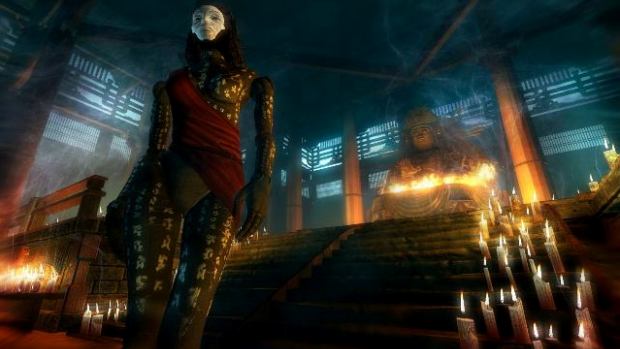
The game has an extensive upgrade system divided into three categories: weapons, powers and skills. Using gathered cash, the weapons can be upgraded with larger ammo capacities or secondary fire modes, but with the katana as good as is it is, this option is a little redundant. Powers require Ki Crystals (a rare commodity, so spend them wisely), and skills are bolstered in exchange for Karma points, collected by dispatching enemies skilfully and efficiently. The upgrades themselves are much too long to list but offer better healing or special attacks, etc. You won’t find enough to max out all your upgrade trees in one play-through, so choose carefully. The whole system with all its branches is, dare I say it, a little too extensive; similarly to the plot, it may have been more enjoyable if scaled back and dumbed down slightly.
Shadow Warrior absolutely looks the part, with beautiful, lush environments, great lighting, and, of course, awesome blood effects – which is nice, as you’ll be seeing a lot of it. The level design is linear but there are enough secret paths and hidden nooks containing collectables so it doesn’t feel too cramped. There are even secret areas that transport you back to the original Shadow Warrior complete with retro-pixel visuals. I did notice some minor frame rate issues, but these only occurred very rarely. The voice acting of Lo Wang and Hoji is top notch, and is a welcome change from the silent protagonist that plagues many an FPS.
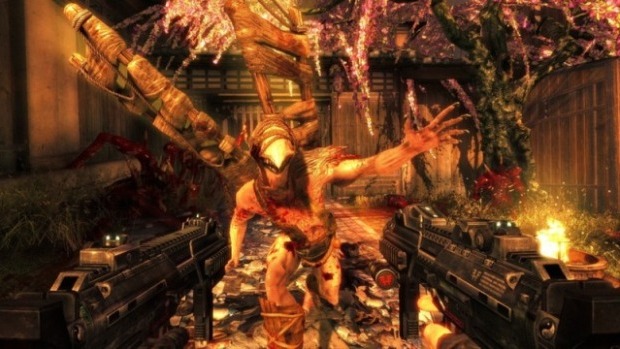
VERDICT: Shadow Warrior is a wild ride; crazy, hilarious and fun. It’s an old-school wolf in modern clothing that plays and feels just like the classic 90’s shooters we all fondly remember. Though it tries a bit too hard in some areas, it can’t be faulted for at least trying to elevate itself above other shooters. The fact it’s not remotely military-related should be enough to earn a playthrough.
Plus, katanas are totally sweet.

GOOD. A game that scores 7/10 is worthy of note, but unworthy of fanfare. It does many things well, but only a few of them incredibly well and, despite a handful of good qualities, fresh ideas and solid mechanics, it fails to overwhelm.


